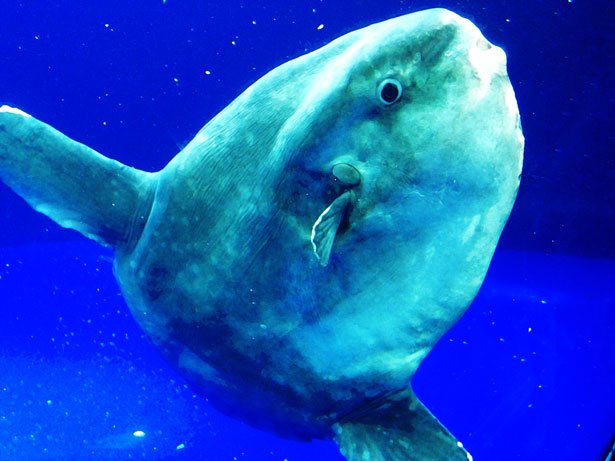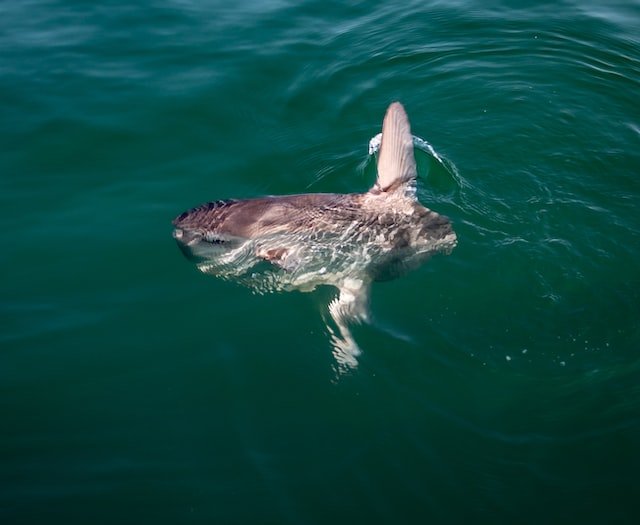The size of fish varies greatly. In terms of weight and length, the whale shark and basking shark dwarf all other fish. Fish are a paraphyletic group that includes aquatic vertebrates but excludes tetrapods, and the bony fish that frequently represent the group is more closely related to cetaceans like whales than to cartilaginous fish like sharks and rays. As a result, the cross-group comparisons on this page serve only a figurative purpose.
10. Hoodwinker Sunfish
2.4 metres (7.9 ft) / 1.87 Tonnes
The hoodwinker sunfish, discovered on a beach near Christchurch, New Zealand, in 2014, was the first new species of sunfish to be identified in 130 years.
It is related to the more well-known ocean sunfish (Mola mola). “Tecta” is a Latin word that means “hidden.” The name “hidden” was chosen because the fish had been blending in with other species of sunfish for a long time and was only recently discovered.
9. Sharptail Mola
3.0 metres (9.8 ft) / 2 Tonnes

The sharptail mola, one of the largest bony fishes, can grow to be 3.4 m (11 ft) long and weigh 2,000 kg (4,400 lb). The sharptail mola is found in tropical and temperate waters all over the world.
The sharptail mola (Masturus lanceolatus) is a mola species found worldwide in tropical and temperate waters. It resembles the ocean sunfish (Mola mola), but can be distinguished by the projection on its clavus (pseudo-tail). Sharpfin sunfish, point-tailed sunfish, and trunkfish are some other common names for this species.
8. Beluga Sturgeon
7.2 meters (24 ft) / 2.1 Tonnes
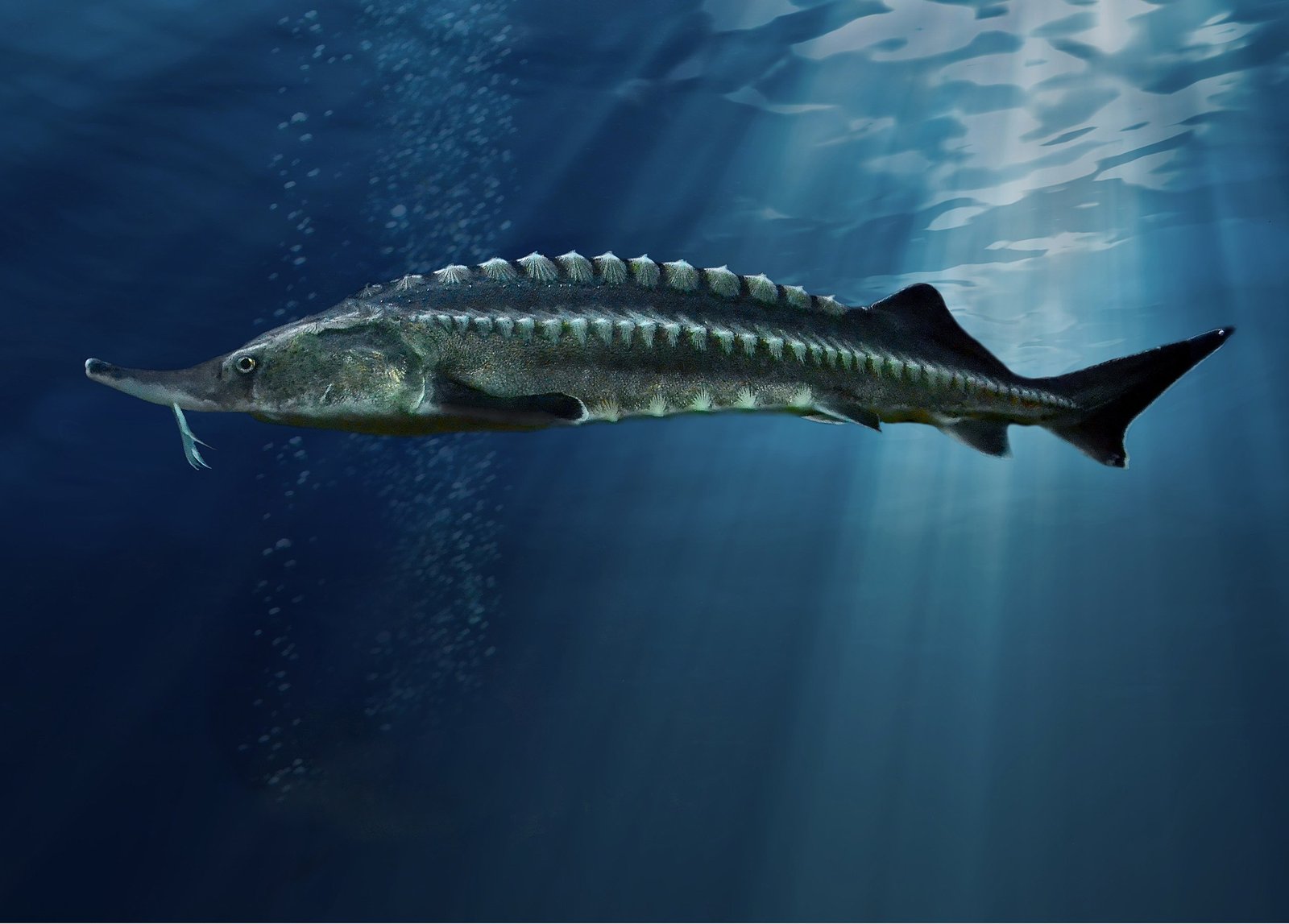
It is primarily found in the Caspian Sea and the Black Sea basins and was previously found in the Adriatic Sea. It is the third-largest living bony fish species in terms of maximum size.
The sturgeon’s common name, like that of the unrelated beluga whale, is derived from the Russian word eл (belyj), which means “white,” and most likely refers to the beluga’s extensive pale coloration on the flanks and belly compared to other sturgeons.
7. Southern Sunfish
3.3 metres (11 ft) / 2.3 Tonnes

In many parts of the world, it is also known as the Ramsay’s sunfish, southern ocean sunfish, short sunfish, or bump-head sunfish. Except for two polar regions, Mola alexandrini has been found all over the world and is widely distributed throughout the world’s oceans. These species were discovered in waters off the coasts of Japan, Taiwan, the Galapagos Islands, New Zealand, Australia, Turkey, Oman, and Spain.
It is found in the southwest Pacific, particularly around Australia and New Zealand, and the southeast Pacific, particularly around Chile. It also has a range in the southeast Atlantic near South Africa. Throughout the seasons on Japan’s Pacific coast.
6. Ocean sunfish
3.1 metres (10 ft)/ 2.3 tonnes
The ocean sunfish, also known as the common mola (Mola mola), is one of the world’s two heaviest known bony fish, the other being the southern sunfish (Mola alexandrini) of the same genus.
The average adult weighs between 247 and 2,000 kg (545 and 4,409 lb). The species is found in tropical and temperate waters worldwide. Its main body is flattened laterally and resembles a fish head with a tail. When their dorsal and ventral fins are extended, sunfish can grow to be as tall as they are long.
Ocean sunfish are found in all temperate and tropical oceans around the world.
Despite their size, ocean sunfish are non-threatening to human divers. Sunfish injuries are uncommon, but there is a slight risk of large sunfish leaping out of the water onto boats; in one case, a sunfish landed on a 4-year-old boy when fish leaped onto the boy’s family’s boat. Sunfish have reportedly become familiar with divers in areas where they are commonly found, and sunfish in some locations have reportedly become familiar with divers.
5. Giant Oceanic Manta Ray
5 metres (16 ft) / 3 tonnes
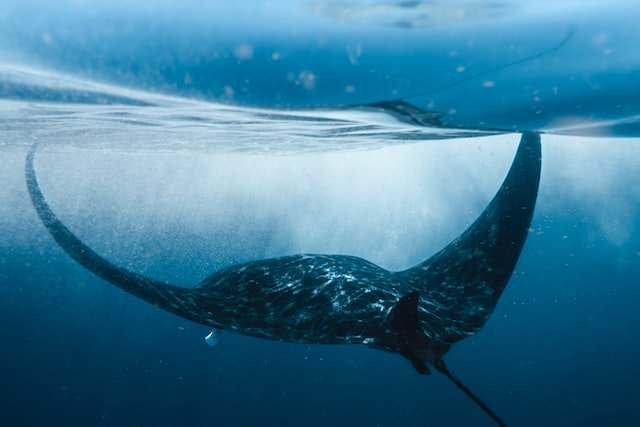
The giant oceanic manta ray, also known as the giant manta ray or oceanic manta ray, is a type of ray that is the largest in the world. It is most common in tropical and subtropical waters, but it can also be found in temperate waters.
The giant oceanic manta ray can reach a maximum length of 9 m (30 ft) and a disc size of 7 m (23 ft) with a weight of around 3,000 kg (6,600 lb).
The giant oceanic manta ray is found in tropical and temperate waters all over the world. It has been recorded as far north as southern California and New Jersey in the United States, Aomori Prefecture in Japan, the Sinai Peninsula in Egypt, and the Azores in the northern Atlantic in the Northern Hemisphere. It can be found as far south as Peru, Uruguay, South Africa, and New Zealand in the Southern Hemisphere.
4. Tiger shark
7.5 metres (25 ft) / 3.11 tonnes
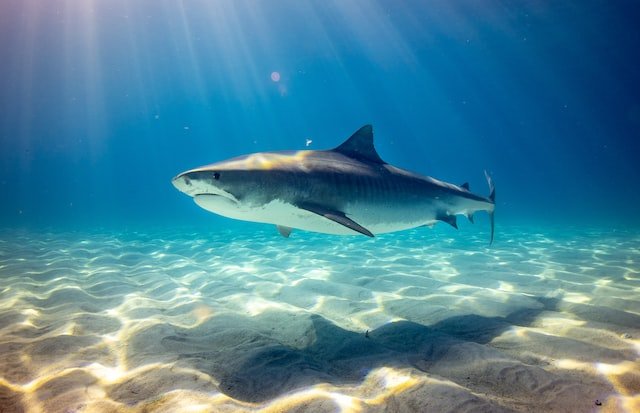
The tiger shark is a nocturnal hunter who hunts alone. It is notable for having the broadest food spectrum of any shark, eating crustaceans, fish, seals, birds, squid, turtles, sea snakes, dolphins, and even smaller sharks. It is also known as a “garbage eater,” as it consumes a variety of inedible, man-made objects that linger in its stomach. Tiger sharks, despite being apex predators, are occasionally taken as prey by groups of killer whales. Because of human finning and fishing, it is considered a near-threatened species.
The tiger shark is second only to the great white in fatal attacks on humans, but these incidents are still extremely rare.
Tiger sharks are frequently found near the coast, primarily in tropical and subtropical waters around the world. Its primary behavior is nomadic, but it is guided by warmer currents and stays closer to the equator during the colder months. It prefers deep waters along reefs, but it will enter channels to pursue prey in shallower waters. The shark has been discovered as far north as Japan and as far south as New Zealand in the western Pacific Ocean. It has also been spotted in the Mediterranean, once off the coast of Spain and once off the coast of Sicily.
3. Great White Shark
7 metres (23 ft) / 3.32 tonnes

The great white shark (Carcharodon carcharias), also known as the white shark, white pointer, or simply great white, is a species of large mackerel shark found in all major oceans’ coastal surface waters. It is notable for its size, with larger females reaching 6.1 m (20 ft) in length and weighing 1,905-2,268 kg (4,200-5,000 lb) at maturity.
The lifespan of great white sharks is estimated to be 70 years or more, far exceeding previous estimates, making it one of the longest-living cartilaginous fishes.
Great white sharks can be found in almost all coastal and offshore waters with water temperatures ranging from 12 to 24 degrees Celsius (54 to 75 degrees Fahrenheit), with higher concentrations in the United States (Northeast and California), South Africa, Japan, Oceania, Chile, and the Mediterranean, including the Sea of Marmara and the Bosphorus. One of the most densely populated areas is around Dyer Island in South Africa.
According to a recent study, California’s great whites have migrated to the White Shark Café, a region between the Baja California Peninsula and Hawaii, where they will spend at least 100 days before returning to Baja. They swim slowly and dive down to around 900 m on the way out (3,000 ft). They change their behavior after arriving and perform short dives of up to 300 m (980 ft) for up to ten minutes. Another white shark that was tagged off the coast of South Africa swam to Australia’s southern coast and back within a year. A similar study followed a different great white shark from South Africa to Australia’s northwestern coast and back, a journey of 20,000 kilometers (12,000 miles; 11,000 nautical miles) under nine months.
2. Basking Shark
14 metres (46 ft) / 5.2 tonnes
The basking shark, along with the whale shark and megamouth shark, is the second-largest living shark and fish after the whale shark. Adults can grow to be 7.9 m (26 ft) long. Its skin is usually greyish-brown and mottled. The caudal fin has a crescent shape and a strong lateral keel. Other common names for bone sharks include elephant sharks, sailfish, and sunfish. In Orkney, it is known as hoe-mother (sometimes contracted to homer), which translates as “the mother of the pickled dog-fish.”
The basking shark is a cosmopolitan migratory species that can be found in all temperate oceans around the world. Its common name derives from its habit of feeding at the surface, where it appears to be basking in the warmer water. It has filter-feeding adaptations such as a greatly enlarged mouth and highly developed gill rakers. It has a conical snout and gill slits around the top and bottom of its head. The dark and bristly gill rakers catch plankton as water filters through the mouth and over the gills. The teeth are numerous and very small, with 100 teeth per row.
1. Whale Shark
18.8 metres (61.7 ft) / 21,5 tonnes
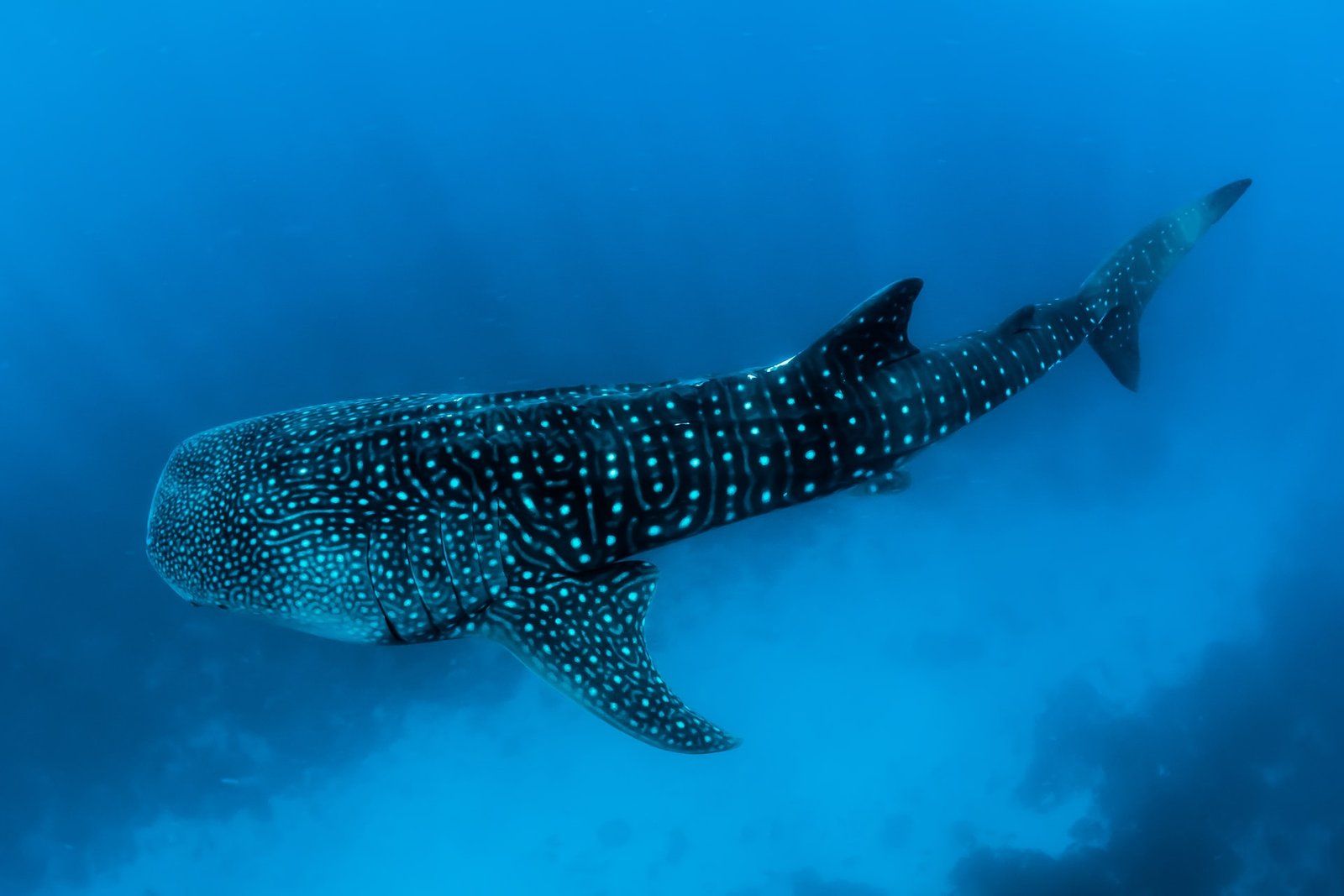
The whale shark is the largest known extant fish species and a slow-moving, filter-feeding carpet shark. The longest confirmed individual measured 18.8 meters in length (61.7 ft). The whale shark holds numerous animal kingdom size records, most notably being the largest living nonmammalian vertebrate.
The whale shark is found in open waters of the tropical oceans and is rarely found in water below 21 °C (70 °F). Whale sharks live for 80-130 years. Whale sharks have very large mouths and are filter feeders, which only two other sharks, the megamouth shark and the basking shark, do. They are harmless to humans because they eat almost entirely plankton and small fish.
The whale shark inhabits all tropical and warm-temperate seas.


